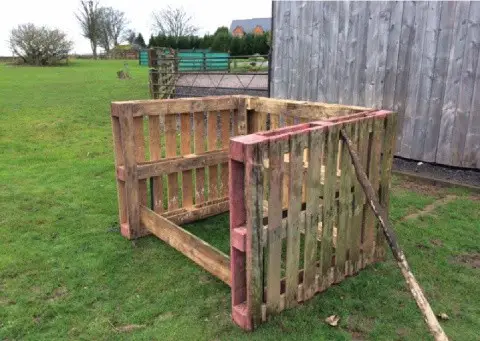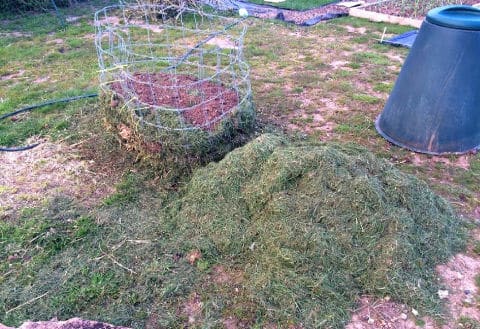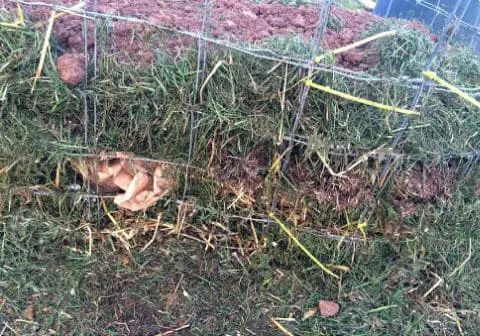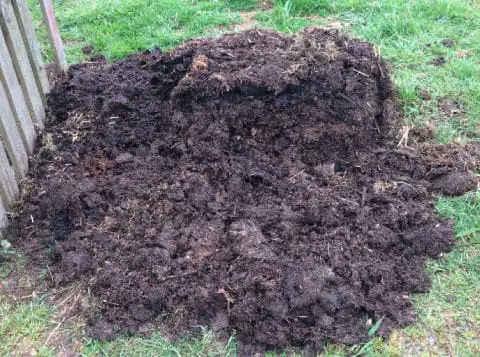How to Make Compost Fast at Home
How to make compost – fast! Nature has a perfect way to return materials to the ground to become food for the future generations of plants. We can mimic this process by making compost and using it as a mulch. It is made by bacterial action on organic materials for which all that is needed is the materials, water and oxygen, nature will do the rest for us.
The basics
- A combination of green materials and brown materials will make the best compost in the shortest time.
- Layer the materials or mix them together, ensure that the whole heap is moist, but not constantly saturated with water and give it some time.
- I prefer to put a layer of open material, like twigs or straw at the base of heaps. This allows excess water to drain away and for worms to travel up from the ground into the heap of materials.
- Covering the top of the heap with a tarp, old carpet, cardboard or a deep layer of straw with help ensure that the heap doesn’t become waterlogged and keep in the heat that is generated in the breaking down process.
How to make a compost bin
You can simply pile or heap all the materials to make compost on the ground, but it is often tidier to make it in a container. A container will also help to increase the volume you can attain and thus increase the capacity for the heap to heat up.

Pallets can be tied together to create a simple compost bin. Watch my video about making a heap from pallets.
Netting like stock fencing or chicken wire can be formed into a circle.
Pieces of wood can be screwed together to form the sides of a compost heap.
Recycle a delivery bag, like the dumpy bags from a builder’s merchant, pierce some small drainage holes in the base.
Bought in compost bins
You can also buy compost heap kits which are usually easy to assemble. They are available in a variety of shapes and sizes like this beehive compost bin.
Plastic cone shaped bins are also available, often referred to as a Dalek bin.
Tumbling or turning bins remove the need to turn the heap.
Hot bins are specifically designed to make compost fast. They are insulated and help to ensure the contents heat up to the optimum temperature for the materials to break down quickly.
What can go onto a compost pile?
So now you have a suitable container or space in which to make compost, gather some materials to start the compost heap. Either collect the materials and build the heap all at once or you can add them bit by bit as you have them.
Green materials
- Annual weeds (best when not in flowers or with seeds heads)
- Grass clippings
- Manure
- Coffee grounds
- Kitchen scraps and peelings (do not include any meat products or fats, which can attract vermin)
- Discarded plants from the garden
- Feathers
Brown materials
- Straw
- Cardboard
- Egg cartons
- Shredded paper
- Newspaper
- Dried leaves
- Wood chips, wood shavings and sawdust
- Woody material from the garden
Methods
There are two basic types of composting, hot and cold.
Cold composting
Cold composting is a slower process and can take 12 -24 months. It is the more simple method of piling the materials together, watering the heap and leaving it to break down slowly. This method may not destroy any seeds in the compost, so potentially you could be spreading weed seeds back on to your garden if you have thrown weeds in flower or in seed into the heap.
Hot composting
Hot composting is potentially more labour intensive, but it is faster and it raises the temperature inside the heap sufficiently to destroy most weed seeds. Turning the heap will speed up the process by allowing more oxygen into the heap.
To make compost fast – turn your compost heap
This is a straightforward process of moving the materials at the top of the heap to the bottom and the outer edges to the center. Using a pitchfork or garden fork move the layers into a new space or if there is not enough room to do that, use the fork to move the contents of the heap, mixing it and allowing oxygen to access the center of the heap. Water the heap if the materials are dry and cover to ensure it does not become waterlogged by rain.
Make compost in three weeks
The following in an excerpt from blog 10th May 2016.
‘Well, today brought a nice surprise! Flashback to 18th April when Mr J cut the grass in the paddock and I created a new compost heap in a metal hoop made from stock fencing wire.

We layered grass clippings with brown material to the depth of about two and half to three feet. I had intended to turn the heap a few times to add air to it to encourage swift decomposition. But we didn’t get a chance to do it because we were busy elsewhere on the smallholding. Mr J and I have watered the compost heap regularly with the water from the ducks’ pond and water buckets. So it has had some attention, just not as much as I would have liked.

Back to today
This afternoon, after the heavy rain had stopped. I thought that if I didn’t do something with it, it would stop composting and turn to stinky sludge, which I really don’t want to use in our new vegetable beds. We have managed to acquire a couple more pallets, so they became the sides of the new compost heap. We are already using the compost from our first two heaps in our raised beds. So it is the ideal time to move the location of the compost heaps to the other side of the paddock to be nearer the raised beds. So, with three pallets strapped together to form a U shape, Mr J and I lifted the wire hoop from around the compost heap that we made on 18th April.
The plan was to put the driest and least composted material in the base of the new heap and the remainder of the partially decomposed heap on the top of it and then water and cover it to allow it to continue to decompose and hopefully in another month or two, it would be ready to use in the garden. But things didn’t go quite according to plan because once I cut into the heap with the spade and removed the outer edges and top layer, I found that the centre of the compost heap was, well, compost!

A bit stunned (and delighted) by what we saw. I dug through it a little and although we can still see a layer of soil and coffee grinds, it is for all intent and purposes ready to use! So that’s it, rich, dark, sweet smelling compost in just 23 days!
Further information
You can read more about life on our small homestead in my first book, Grounded, which is available to order on this website, at Permanent Publications, Chelsea Green Publishing, most good bookstores (in person and online) and via Amazon.
- Biennials to sow in June and July - September 12, 2025
- Protected: Urban back garden - August 28, 2025
- White garden in early summer - August 28, 2025
